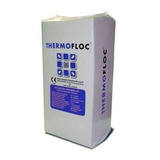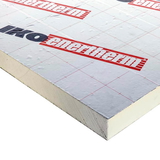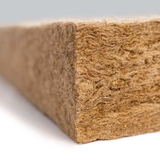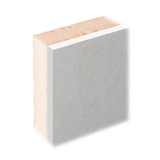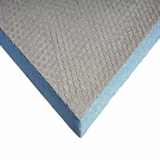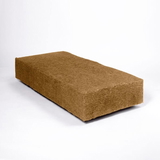- Blogs
- Understanding Insulation Thicknesses as per EN 823: A Simple Guide
Understanding Insulation Thicknesses as per EN 823: A Simple Guide

When you're on the lookout for insulation, it's crucial to grasp the details about thickness tolerances. This knowledge is key to ensuring that the insulation you're buying meets your expectations.
In this guide, we'll dive into the world of thickness tolerances and shed light on why having an understanding of these tolerances is vital.
Understanding thickness tolerances according to BS EN 823
Thickness tolerances play a big role in maintaining quality and consistency across different industries. For insulation materials, these tolerances are laid out according to the guidelines in the European standard BS EN 823. This standard sets the criteria for insulation products, especially those falling under the T2 class.
BS EN 823 precisely outlines the requirements for thickness tolerances that manufacturers must stick to. In simple terms, while exact thickness isn't a must, it must fall within a specified range. Insulation tolerances set the boundaries within which the material's thickness is allowed to vary. This standard aims to ensure a uniform and reliable performance of insulation materials. Manufacturers, by adhering to these tolerances, guarantee that the insulation material will deliver the expected thermal and acoustic insulation.
What's the deal with BS EN 823 - Thermal Insulation Thickness?
Reducing energy consumption through thermal insulation is a smart move to prevent unwanted heat loss or gain in a building. BS EN 823, a European Standard, dives into the realm of thermal insulating products for building applications. The primary goal of the BS EN 823 series is to equip manufacturers with industry best practices for demonstrating the performance of thermal insulation products, ensuring they're fit for their intended purpose.
BS EN 823 targets thermal insulating product stakeholders, including manufacturers, builders, architects, contractors, engineers, building owners, specifiers, installers, and quality control personnel.
Why Opt for BS EN 823?
Thermal insulation is crucial for maintaining temperature stability in a given space, be it for protection, comfort, or economic reasons. BS EN 823 provides detailed guidance on testing insulation thickness, covering aspects such as apparatus, test specimens, procedures, calculations, expression of results, and measurement accuracy.
For manufacturers of thermal insulation products, compliance with BS EN 823 is a testament to the performance and credibility of their products, ensuring they're fit for purpose. This, in turn, allows occupants of buildings to conserve energy and cut costs effectively.
Understanding how much the Insulation can vary in thickness.
BS EN 823 allows for a deviation range in the thickness of the material. In simpler terms, the thickness doesn't have to be an exact match; it just needs to fall within the designated range. The permissible deviation depends on the nominal thickness of the insulation product. The specified ranges, according to BS EN 823, are as follows:
| Nominal thickness (mm) | Tolerance |
| < 50 | ± 2 |
| 50 to 75 | ± 3 |
| >75 | +5, – 3 |
How to measure an insulation board correctly?
Before you measure, make sure you've got a reliable, undamaged tape measure, calliper, or micrometre. Failing to do so could lead to inaccurate results.
The thickness test, as outlined in BS EN 823, involves placing the product or sample on a flat surface. A flat pressure plate is then applied on top, and the gap between them needs to be measured. To illustrate, consider a 2400x1200mm board undergoing this test. A slight reduction in thickness within the final 15-20 mm of the 1200mm side won't impact the test outcome.
Explaining what BS EN 13165 Is all about.
BS EN 13165 provides additional insights into the overall performance and characteristics of insulation products. This standard covers aspects like thermal conductivity, water vapour permeability, and mechanical properties, complementing the thickness tolerances defined in BS EN 823.
In essence, the combination of BS EN 823 and BS EN 13165 ensures that manufacturers produce insulation products that meet the necessary quality and performance standards. These standards play a pivotal role in industries such as construction, ensuring energy efficiency, and comfort in buildings, and promoting sustainable practices.
Frequently Asked Questions
Q: How does cavity wall insulation work?
A: Cavity wall insulation involves filling the gap or cavity between the external and internal walls of a building with insulation materials. This helps to reduce heat loss, improve thermal efficiency, and enhance the overall energy performance of the building.
Q: What are PIR and Xtratherm in the context of insulation?
A: PIR (Polyisocyanurate) is an example of high-performance rigid insulation materials commonly used in construction. It is designed to provide superior thermal performance and are often manufactured to strict dimensional tolerances to ensure proper fit and efficiency while Xtratherm is a brand that offers a range of insulation products, and it is known for its innovative and high-performance solutions in the construction industry. Xtratherm produces insulation materials using various technologies, including PIR insulation boards. Their products are designed to meet specific thermal performance requirements and building regulations. Xtratherm products, including PIR insulation boards, are used in a variety of construction applications to enhance the thermal efficiency of buildings.
Q: What is partial fill cavity insulation?
A: Partial fill cavity insulation involves filling only a portion of the cavity wall with insulation material, leaving an air gap to prevent thermal bridging. This method helps to maintain the structural integrity of the wall while still improving its thermal properties.
Q: What is thermal bridging in wall construction?
A: Thermal bridging occurs when there is a break in the insulation layer, leading to the transfer of heat through the building structure. It can reduce the overall thermal performance of the building and increase energy consumption, making it essential to address and minimise in construction.
Q: How do high-performance insulation systems differ from commonly available insulation boards?
A: High-performance insulation systems such as PIR insulation boards offer superior thermal efficiency and are manufactured to strict dimensional tolerances, ensuring precise fit and optimal performance. This sets them apart from commonly available insulation boards in terms of their thermal conductivity and overall effectiveness.
Q: What are the key benefits of external wall insulation?
A: External wall insulation provides numerous benefits, including improved thermal performance, reduced heat loss, enhanced building aesthetics, and protection against weathering. It also contributes to the overall energy efficiency and comfort of the building's occupants.
Conclusion
In conclusion, a firm grasp of insulation thickness tolerances, as outlined by BS EN 823 , is crucial for ensuring the quality and consistency of insulation materials. Compliance with this European standard not only promotes energy efficiency and cost-effectiveness in buildings but also serves as a testament to the performance and credibility of thermal insulation products.
When combined with standards like BS EN 13165, these guidelines provide a holistic approach, ensuring that manufacturers produce insulation materials that meet stringent criteria for thickness, thermal conductivity, water vapour permeability, and mechanical properties. Adherence to these standards is essential for fostering sustainability and excellence in the construction industry.

Samuel Hitch
Managing Director
Buy Insulation Online.
Leave A Reply
Your feedback is greatly appreciated, please comment on our content below. Your email address will not be published. Required fields are marked *






